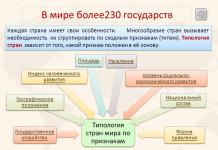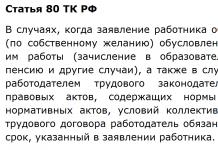Nature is an inexhaustible source of spiritual enrichment for children. Children are constantly in one form or another in contact with nature. The endless diverse world of nature awakens a keen interest and curiosity in children. What amazing things does nature bring us? She is like us humans. She has different moods. funny - when the sun sad- when it rains, it happens - she angry, then winds blow, blizzards howl, thunder rumbles. Nature, like us, wears different clothes: in summer - in bright floral prints, and in winter - in a white fluffy coat.
Download:
Preview:
To use the preview of presentations, create a Google account (account) and sign in: https://accounts.google.com
Slides captions:
Winter patterns on the window.
Frost is the best artist, He walks around the city. Then he will blush his cheeks, He will pinch everyone by the nose And at night, while I was sleeping, He came with a magic brush, And on the window he painted Sparkling leaves
In winter they fall from the sky And circle over the earth Light fluffs, white Snowflakes
It turned white overnight everywhere And in our apartment a miracle The house disappeared outside the window There a magical forest grew ...
On the topic: methodological developments, presentations and notes
Abstract of a lesson in decorative drawing in the senior group "Winter patterns on the window"
The lesson helps children to show creativity and imagination in drawing up a pattern from plant elements using cold-colored paint....
"Winter patterns on the windows"
"Winter patterns on the windows" (compendium of the direct educational activities of children in the preparatory group) ...
Summary of the integrated lesson in the preparatory group "Winter patterns on the windows"
The lesson involves continuing to acquaint children with seasonal changes in nature, with the characteristic signs of the winter season, and to correlate with this period the features of the life of animals, plants and phenomena.
Synopsis of a comprehensive lesson in the preparatory speech therapy group Developed by the teacher of the speech therapy group - Shalamygina I.M. Topic: “Zimushka - Winter, the winter was snowy. Winter patterns on the windows.
Synopsis of a comprehensive lesson in the preparatory speech therapy group Developed by the teacher of the speech therapy group - Shalamygina I.M. Topic: “Winter - Winter, Winter was snowy. Winter patterns on the windows.
To use the preview of presentations, create a Google account (account) and sign in: https://accounts.google.com
Slides captions:
Frosty patterns
Who draws a fairy tale without a brush and paint in winter?
Frost draws intricate patterns on the window, Like a fairy tale on glass, Like a wonderful world open to the eye. Like lace braid Intricate weaving, It was invented by Winter Itself or at whose behest ... Frost draws on glass, Not hiding his Delight. Try to repeat the pattern, It will always turn out differently.
What can be seen in such a letter on the glass? What did frost write or draw?
What color is the frost pattern?
The patterns on the glass only at first glance seem white, if you look closely, they shimmer with all the colors of the rainbow. But still the cold palette prevails. Cyan Lilac Blue Purple
Now imagine yourself as a magician Frost (physical education) Bom - bom - bom, the clock is knocking. (tilts in different directions) Frost twisted his mustache (circular swings of his arms) He combed his beard (movements imitating combing a beard) And went around the city (step in place)
Natalia Nikolaevna Kazakevich
Directly-educational activity-artistic creativity-drawing.
Target: To form the artistic taste of children, develop creativity, thanks to the ability to see, notice the beauty of nature.
Tasks: To enrich the cognitive level of children in the field of natural phenomena;
Teach children to work carefully, to do the work, observing its sequence;
To develop the creative abilities of children - to reflect in the drawings the characteristic signs of the season (winter patterns on the window) in an unconventional way of drawing - with a candle - to improve visual control over the creation of a drawing, develop imagination, fantasy, sense of color;
To form in children the ability to observe - to see the unusual in the ordinary;
To educate love for nature, for the beautiful, for the artistic word (poetry, to educate emotionality, activity, a sense of association.

sloppy work: storm, blizzard, blizzard, patterns, carved, mysterious.
preliminary work: Observation in nature of the beauty of the winter landscape; reading poems: S. A. Yesenin "White birch", K. Balmont "Snowflake", V. Orlov "Fringe", R. Kudashova "Winter has come", looking at pictures on the topic "Winter", "Winter fun", acquaintance with the technique of drawing in an unconventional way - with a candle.
Material: music recording (album by M. Tchaikovsky "Seasons", poems by V. Tatarinov, A. Brodsky, « frosty windows» or illustrations; al. A4 sheets, candles (or white wax crayons, brushes No. 5, blue, purple gouache, water, cups.
1 part. Sounds like music from the album "Seasons" M. Tchaikovsky (melody on the theme "Winter"- blizzard, blizzard howls - "sings")
caregiver: Children, what did you imagine while listening to this music?
(children's answers)
caregiver: When (what time of year) does this natural phenomenon occur? (children's answers)
caregiver: “... A storm covers the sky with darkness, twisting snow whirlwinds. Like a beast, she will howl, then she will cry like a child ... " (A. S. Pushkin) What do you guys think, do these lines of the poem fit this music, reflect its character? (children's answers)
caregiver: And what is your mood, what feelings does the nature of this music evoke? (children's answers, feeling of sadness, sadness, loneliness)
caregiver: A storm, a snowstorm, a snowstorm, a blizzard, howls - all this happens, as you already said, in winter. But in winter, there are probably many pleasant and beautiful moments. What makes you happy in winter? (children's answers)
caregiver: I will guess a riddle that, having guessed, you can name another beautiful phenomenon of the winter time:

Grabbed by the cheeks, by the tip of the nose,
Painted the window without asking
But who is this - that's the question,
All this makes… freezing! (children answer).
caregiver: Let's take a closer look at these "drawings" on window(if possible, it would be good to consider such windows in reality, but if not, then you can make a selection of illustrations depicting « frosty windows» )
Guys do you like these "drawings"? What do you see? (what images). (children's answers)
caregiver: (summarizing children's answers) Beautiful, fluffy, carved, crystal branches ...
Invisible, carefully he comes to me
And draws like an artist, he patterns on the window.
This is a maple, and this is a willow, here is a palm tree in front of me.
How beautifully he draws with white paint alone!
I look - do not come off: branch lines are gentle!
And the artist is happy to try, even brushes are not needed. (A. Brotsky).
caregiver: Would you like to draw similar patterns(children's answers)
caregiver: And how can we draw beautiful Frost patterns?
What do you think is the best way to do this?
(children's answers; I suggest that children make drawings in an unconventional way - with a candle. Together with the children, we recall the technique of doing this work way: candle (or white wax pencil) we put the drawing on a sheet of paper, then lightly, with soft movements of the brush, paint over the entire sheet in blue-blue (day) or dark blue, purple (night) tones, at the request of children)
caregiver: Children, how beautiful you got the patterns! How real! And you, Ksyusha, what do you call these patterns? What word would you like to call them?
(I give children the opportunity to express their thoughts, feelings, emotions - to speak out; I suggest epithets - adjectives: original, fabulous, magical, mysterious, mysterious)
caregiver: grandfather Frost on the windows breathes,
Paintings on the glass:
Arrows, towers and flowers
Unparalleled beauty!
From what crystal fairy tale
Did he get those paints?
Foliage sparkles,
Silver lace...
Wow, what a beauty.
(V. Tatarinov).
You guys just created an extraordinary beauty too.
Well done! Even the mood has risen. What feelings are you experiencing right now? (children's answers, joyful, cheerful, feelings of admiration)
caregiver: And remember your mood when listening to music ... It (mood) changed? Why? What changed your mood? (children's answers)
caregiver: (summarizing) Beauty, children, creates a wonderful mood! It makes us kinder, more sincere ... Thank you for the beauty, for the wonderful mood!
MUNICIPAL EDUCATIONAL INSTITUTION
KARASEVO SECONDARY EDUCATIONAL SCHOOL
Phone: 6179-998, 6179-909 140451, Moscow region, Kolomensky district
Email: [email protected] Lesnoy village, Shkolnaya street, house 1.
Fine art lesson
in class 1 on the topic
"FROST PATTERNS"
Art teacher
Tselousova S.B.
December 2011
LESSON TOPIC: “FROST PATTERNS»
Class : 1
Teacher: Tselousova Svetlana Borisovna
Class type : drawing from memory and representation (according to a pre-prepared form)
Lesson type : familiarization with new material and work technique
Methods: dialogical exposition, integration, educational dialogue.
Goal objectives:
educational:
Learn to transform a real form into a fabulous one. Express your feelings, depict the beauty of the world around you.
developing:
Emotional perception of nature in its various states
Development of creative imagination
Observation of the beauty of nature.
Nurturing:
Raise interest in works of art, the world around us, music, literary works.
The results of mastering the material:
Personal: To master the primary skills of drawing on a plane, the development of independence.
subject : mastering the techniques and techniques of working with wax and watercolor
Metasubject : connection with music (listening to musical works), natural science (acquaintance with the origin of the natural phenomenon of frost), literature (listening to poems about winter).
Forms of organizing the work of children:
Viewing slides introducing children to winter natural phenomena
Frontal work with slides and a picture, guessing riddles
Listening to musical works.
Examining photos and answering questions on the topic.
Form of work in the lesson- individual.
Equipment:
For students: watercolor, wax crayons, brushes, napkins, sponge, jar of water, glue-pencil, window and door shapes.
Panel on the board - a fabulous palace without windows and doors.
For the teacher - multimedia projector, laptop, screen, board.
Music: G. Sviridov. Music for the film "Snowstorm", ringing of bells, "Waltz of the Snowflakes".
Literature: Riddles, poems about winter.
DURING THE CLASSES
- Organizing time. slide 1
The children take their places.
Hello guys! I'm glad to welcome you. Today we have an unusual lesson for you!
2. Conversation on the topic of the lesson. slide 2
(music plays , Sviridov "Snowstorm")
It came to us
One letter
It was strange.
Instead of stamps
three snowflakes,
And the envelope
From pure ice
And the letter is not on the sheet,
And on the white snow:
- Soon soon
I will come to you
I'll fly to the blizzards
I will dance and spin
I will cover the earth with snow,
Trees and houses...
And signed: "WINTER" ( I. Pivovarova)
Who could send us such a letter?(children's answers: winter)
When can we say that winter has come?When the snow fell, the puddles freeze, it's cold
Quietly winter comes. As in a fairy tale, in one night it covers houses and trees with snow, freezes puddles, lakes and rivers. You wake up one morning and suddenly you see that everything outside the window has changed.
Look how beautiful winter can be. Do you like this nature?(viewing pictures of nature) slides 3,4,5,6
Guys, guess the riddle?
Slide 7
Who draws fairy tales without a brush and paint in winter? Who helps Zimushka Decorate everything around? (frost draws fabulous patterns)
Invisible, carefully
He comes to me
And draws like an artist
He patterns on the window.
This is maple, and this is willow,
Here is the palm tree in front of me.
How beautifully he draws
White paint alone! (Freezing)slide 7 (photo by Frost - by clicking)
What does frost draw with white paint? Where does he paint?Frosty patterns on the windows.
Setting the topic of the lesson.
slide 8
Guys, The theme of our lesson is "Frosty Patterns".Let's go visit Frost.
Do you love fairy tales? Do you enjoy looking at snowflakes or frosty window panes?
slide 8 (click)
Such miracles happen if Morozko looked out the window. From his cold breath, wonderful ice flowers bloom on the window: roses and chrysanthemums, frosty twigs and leaves grow.
slide 9
Physical education minute
Music sounds
Imagine that we are in a fairy forest, it is snowing, the wind is blowing,trees sway.
Stand up, show how the wind blows and tilts the trees in different directions, how the snowflakes circle. The wind calms down, calms down. Sit down.
Slide 10
Setting the task of the lesson
I open the palace on the board.
Do you like him? Let's consider it carefully.
Let's look out the window! Something, I can’t make out, but where are the windows and doors!? What a gloomy and gloomy palace this is!
And you know this palace is unusual, it is enchanted. He was bewitched by the evil Snow Queen. Let's try to break it down!
What do you think needs to be done so that we can enter this palace?
Draw and decorate windows and doors.This will be the purpose of our lesson.
But we will draw not just windows. This is a winter palace, which means that the windows will be winter. What do you think? (frosty, in patterns).
Well done, of course in patterns!
Slides 11,12
Have you seen real frosty patterns?(Not really)
Let's admire the frosty patterns together.(slide view)
What do they remind? What do they look like? (forest, mountains, flowers, birds, branches).
In frosty patterns, you can see magical gardens in which unusual trees and flowers grow. In such a garden, you can find a spikelet, a feather, an aster and a chrysanthemum, branches of spruce or pine.
Guys, do you know how patterns appear on windows?
The warm air that we breathe out comes into contact with a very cold window, freezing, turning into ice crystals. They then form a complex pattern. Since there are invisible drops of water in the air.
What color are the frost patterns?(white, blue, blue)
Frosty patterns only at first glance seem white, they shimmer with all the colors of the rainbow. But still prevail cold colors . This is blue, blue, purple, lilac. Why are they cold? What can they be compared to?(with snow, ice, frost).
slide 13
Let's play! Circles will appear in front of you.If they are cold - we clap, if they are warm - we are silent.
Slide 14 creative work
Pay attention, on the tables you have sheets of an already given shape - according to the shape of windows and doors, we will need to depict frosty patterns on them. Today we will depict frosty patterns using mixed media (wax and watercolors). Look at your tables.What artist's tools do you have on your desks?(brushes, paints, candles)
Guys, today we will work with an unusual material - a candle. We used to use it to make the house brighter. But today it serves a completely different purpose. Candle wax does not let water through and does not stain paper. The stripes drawn by the candle will remain white and transparent.
slide 15 Explanation of work steps.
Listen carefully to the order of work:
1) Draw a picture on paper with light strokes and lines with a candle with gentle pressure on a dry sheet. Draw clear lines, not very thin.
2) Cover the sheet with water without paint.
3) Without letting the sheet dry, evenly apply blue or lilac paint.
(during the explanation, cards with a phased image of the work are placed on the board: a candle, a glass with a brush, a jar of blue paint).
Demonstrate how to work with wax crayons and watercolors.
Look what a miracle! What a wonderful pattern comes out from under my brush! Remember that we paint only with cold colors.
slide 16 Practical work.
The music is "Dance of the Snowflakes"
Slide 17 Summing up the lesson. Aesthetic appreciation.
You have disenchanted the palace, invented your own fairy tale. Consider the palace. Look how bright and beautiful it turned out.
Your designs look real! Did you like the palace?
Slide 18
Do you hear the bells ringing? What is this? This Winter is flying towards us on her magical sleigh. And Morozko presented New Year's souvenirs to everyone for our excellent work.
Reflection
Did you enjoy the lesson? Did you like today's lesson?
What new artist tools did you learn?


































